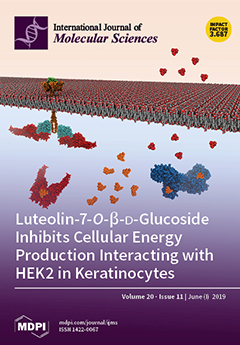Insulin signaling is mediated by a highly integrated network that controls glucose metabolism, protein synthesis, cell growth, and differentiation. Our previous work indicates that the insulin receptor tyrosine kinase substrate (IRTKS), also known as BAI1-associated protein 2-like 1 (BAIAP2L1), is a novel regulator
[...] Read more.
Insulin signaling is mediated by a highly integrated network that controls glucose metabolism, protein synthesis, cell growth, and differentiation. Our previous work indicates that the insulin receptor tyrosine kinase substrate (IRTKS), also known as BAI1-associated protein 2-like 1 (BAIAP2L1), is a novel regulator of insulin network, but the mechanism has not been fully studied. In this work we reveal that IRTKS co-localizes with Src homology (SH2) containing inositol polyphosphate 5-phosphatase-2 (SHIP2), and the SH3 domain of IRTKS directly binds to SHIP2’s catalytic domain INPP5c. IRTKS suppresses SHIP2 phosphatase to convert phosphatidylinositol 3,4,5-triphosphate (PI(3,4,5)P
3, PIP3) to phosphatidylinositol (3,4) bisphosphate (PI(3,4)P
2). IRTKS-knockout significantly increases PI(3,4)P
2 level and decreases cellular PI(3,4,5)P
3 content. Interestingly, the interaction between IRTKS and SHIP2 is dynamically regulated by insulin, which feeds back and affects the tyrosine phosphorylation of IRTKS. Furthermore, IRTKS overexpression elevates PIP3, activates the AKT–mTOR signaling pathway, and increases cell proliferation. Thereby, IRTKS not only associates with insulin receptors to activate PI3K but also interacts with SHIP2 to suppress its activity, leading to PIP3 accumulation and the activation of the AKT–mTOR signaling pathway to modulate cell proliferation.
Full article






